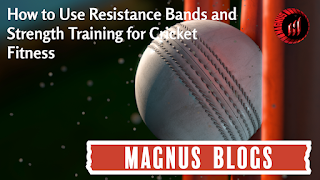Sweat Memory: Can the Fabric in Your Gloves 'Remember' Your Playing Style?
In cricket, the glove is more than just a piece of protective equipment — it's the bridge between a batter’s intent and the bat's execution. But what if there’s more to gloves than just grip and protection? What if the fabric inside your gloves subtly adapts to your hand’s behavior over time — forming what we might call a "sweat memory"?
This isn’t science fiction. The concept explores how repeated exposure to sweat, hand pressure, and muscle patterns may condition the inner glove materials to align uniquely with your playing style.
What Is “Sweat Memory”?
“Sweat memory” refers to the gradual adaptation of glove materials — especially the inner lining, padding, and leather or synthetic fabric — to your specific grip pattern and moisture distribution over time. Just like how memory foam molds to your sleep position, glove interiors can take on the subtle imprint of how you play.
This memory might not be visible to the eye, but it could impact:
-
Grip comfort and feel
-
Reaction time
-
Muscle memory reinforcement
-
Consistency in hand positioning
The Science Behind the Concept
-
Heat and Moisture Interaction
As your hands sweat, the moisture softens the glove’s padding, especially in key pressure zones. Over time, repeated exposure causes the fabric to compress and harden unevenly, reinforcing specific grip behaviors. -
Grip Pressure Mapping
Every player holds the bat differently — some squeeze tighter with the bottom hand, others relax their grip. The fabric begins to compress more where force is frequently applied, forming a passive “mold” of your style. -
Textile Fatigue and Set-In Shape
Just like running shoes form creases where your foot bends, cricket gloves start to “set” around your finger and palm movements, subtly shaping your hand’s muscle memory.
What It Means for Players
Pros:
-
Improved comfort with prolonged use
-
Enhanced confidence due to familiar feel
-
Reinforcement of personalized grip
Cons:
-
May lock you into suboptimal habits
-
Reduced adaptability to different bat handles
-
Inconsistent grip feel if glove padding degrades unevenly
Does Sweat Memory Affect Performance?
Yes — especially for seasoned players. Imagine switching to a new pair of gloves after using your “molded” pair for 6 months. Suddenly, the bat feels off, even though the gloves are technically better. That’s the absence of sweat memory. Your hands are missing the subtle feedback loops they’ve grown used to.
How to Know Your Gloves Have Formed a ‘Memory’
-
The gloves slide on easily and settle into a natural grip
-
Padding feels thinner or firmer in specific pressure zones
-
You instinctively position your hands without visual alignment
-
New gloves feel “wrong” even if they fit the same size
Is This Good or Bad?
It depends on your perspective:
-
For players with refined, disciplined technique, sweat memory is a gift — it enhances comfort and consistency.
-
For players with flawed grip mechanics, it could solidify bad habits.
In either case, recognizing sweat memory empowers you to rotate gloves, train technique, and replace gear when comfort starts to compromise form.
Tips to Use Sweat Memory to Your Advantage
-
Break in gloves gradually — let them adapt slowly to avoid rapid compression.
-
Rotate between 2–3 pairs during a season to avoid over-molding.
-
Store in a breathable area post-match to prevent sweat crusting.
-
Wash or clean inner linings to minimize bacteria buildup that may harden the padding.
Cricket bat types, Cricket equipment in usa, Cricket equipment store, Cricket gloves, Cricket helmet, Cricket kit bags, Cricket retailers, Durable cricket gloves, English willow bats, Icc approved helmets., Kashmir willow cricket bat, Latest kashmir willow bat
.png)
.png)
.png)

Comments
Post a Comment